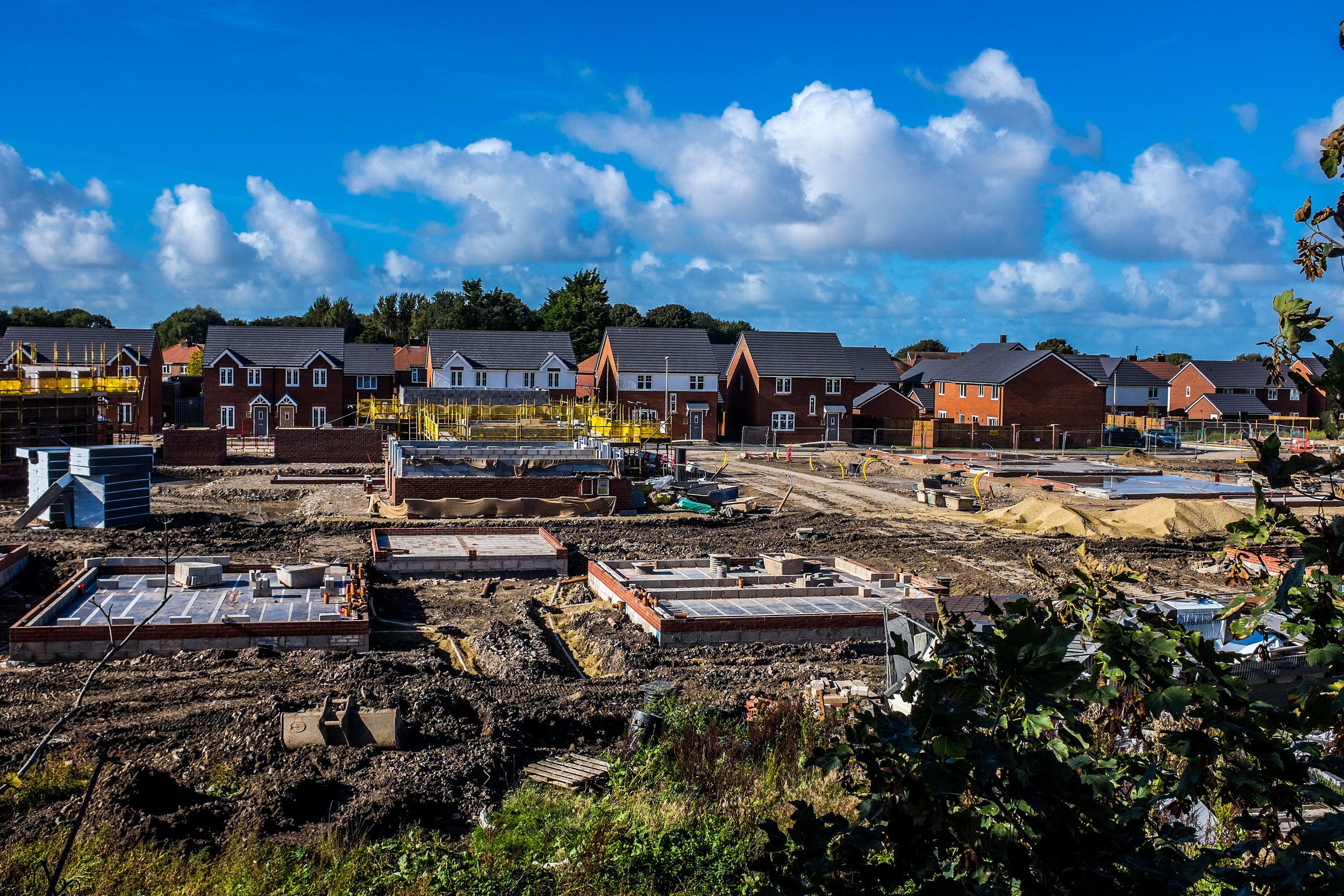Starmer’s Labour government: More of the same or a new way forward for building homes?
Well, it’s been a few months, and Keir has just about settled into his new digs at Downing Street. Big promises have been made after 10+ years of house-building stagnation under the Tories' rule. The question is, will we get the change needed to kickstart the industry into action?
Running on a ticket of positive change with a steadfast promise to build 1.5 million homes, Labour is now in a position where they have to start putting words into action. If they can achieve what they claim, it’ll be a massive boon to our industry and the nation as a whole. More good-quality homes can only be a good thing for our economy and families.
In this blog, we wanted to take a look at Labour’s plans and give you our take. As we’ll see, there are still questions left to answer—particularly surrounding planning reform and, crucially, how we will physically build these homes. However, there are certainly reasons to be optimistic.
Labour’s Key Policy Proposals for the Housing Industry
Ambitious Housebuilding Targets
1.5 Million New Homes: Labour has committed to constructing 1.5 million new homes within the next parliament, marking one of the most ambitious housebuilding programs in recent history. This includes a significant portion allocated to affordable and social housing, aiming to address the chronic housing shortage and affordability crisis.
Affordable Housing Requirements: Strengthening planning obligations will require developers to include a higher percentage of affordable homes in new developments. This ensures that new housing projects contribute directly to alleviating housing scarcity for lower-income families.
Music to our ears! The UK has been crying out for new homes for decades, and it’s been too easy to work around affordable housing requirements, raising questions about the efficacy of the current system.
Housebuilders and developers will need to adapt to the stricter planning obligations surrounding affordable housing. There’s potential for project costs to increase, but it also opens up opportunities for public-private partnerships to meet those targets. What’s more, the shift to more affordable housing could also shift builders’ focus to more cost-effective building practices and materials, like offsite and MMC.
However, there's a significant concern that remains unaddressed: How are we going to build 1.5 million homes? We currently don't have enough skilled labour to build even 200,000 homes a year, let alone the over 300,000 required under Labour’s new plan. This is a fundamental issue that needs to be tackled head-on. Unlocking land through planning reform is one thing, but without the workforce, we risk falling short of these ambitious targets.
Community Involvement and Local Targets
Public Consultations: Regular engagement with residents to understand their housing needs and priorities will be institutionalized. This includes setting up community advisory boards that work alongside planning authorities.
Feedback Mechanisms: Establishing channels for ongoing community feedback to adjust housing targets as necessary ensures that development remains aligned with local needs.
Bringing housing targets to the local level is fine and good, but it’s highly dependent on the planning reforms Labour brings into force—something we’re still light on details for. All we know at the moment is that the regulations will be streamlined and designed to encourage faster building. Until we have more information, it’s difficult to know what to make of the plans.
But beyond planning reforms, we need a clear plan for who will build these homes once the planning rules are loosened. Government departments, developers, architects, local councils, and planning authorities all need to collaborate to develop a workforce strategy.
For instance, Andy Burnham's 75,000-home target for Manchester raises important questions for companies like us at Mansell. How can we, an MMC specialist with Manchester in its veins, access this work and be part of the solution? Right now, the information on how these targets will be met and how we as part of the industry can get involved is piecemeal at best.
Brownfield First Approach
Priority Development: Labour aims to prioritize brownfield sites for new housing developments, fast-tracking approval processes for these areas to make use of existing urban spaces.
Balanced Land Use: While brownfield sites are prioritized, Labour acknowledges that these alone won't meet all housing needs. Thus, selective development on Green Belt land may also be considered where necessary.
Grey Belt Development: The grey belt refers to areas that aren’t designated Green Belt but are on the fringes of urban areas. These areas might’ve been previously developed or are of lower environmental quality compared to traditional green belt areas. The plan is to utilize these grey belt areas to reduce the reliance on developing Green Belt areas.
In general, brownfield sites are more challenging to build on. They often require investment into specialized clean-up processes and increased costs. That said, opportunities exist for urban regeneration projects that can revitalize neglected areas and bring solid economic benefits to local communities.
Leasehold and Planning Reforms
Ban on New Leasehold Flats: Labour will ban the creation of new leasehold flats, making commonhold the default tenure for new builds. This aims to simplify ownership and eliminate the issues associated with leasehold arrangements.
Efficient Planning Processes: The planning system will undergo reforms to become more efficient, supporting faster approvals and reducing bureaucratic delays. No details on how this will be done just yet.
The ban on leaseholds is an obvious move to make. Leasehold arrangements have long been a source of controversy and pose concerns for property buyers. With plenty of instances of so-called fleecehold agreements with unfair clauses and escalating ground rents, there’s little to be gained from keeping them.
When it comes to planning reforms that streamline the process and encourage faster development, it’s difficult to say much until we have more to go on. The only answer we can give now is that yes, reform is needed to get the house-building industry back on its feet and firing on all cylinders. But again, without addressing the skills gap and workforce shortage, planning reform alone won’t be enough to meet these ambitious targets.
Cause for Optimism but Let’s Not Lose Sight of the Size of the Task
After years of being stuck in the mud on house building and the Tories themselves dropping the homes target in the last government, it would be difficult for Labour to do a worse job. The early rumblings of this fresh-faced government suggest that Starmer’s premiership will bring positive change and a renewed commitment to building ourselves out of the housing crisis. But promises are easy to make and harder to keep.
The disconnect between theory and reality is glaring. While the policy frameworks are encouraging, the absence of a detailed plan on how these homes will actually be built leaves a big question mark over the entire strategy. We need to see a concerted effort to bring together all stakeholders—from government departments to developers, architects, and local councils—to figure out how to meet these targets.
We’ll be watching with interest over the coming months to see what happens. We’re fully on board and ready to back plans with positive action. Here’s to hoping we can collectively get it right.



